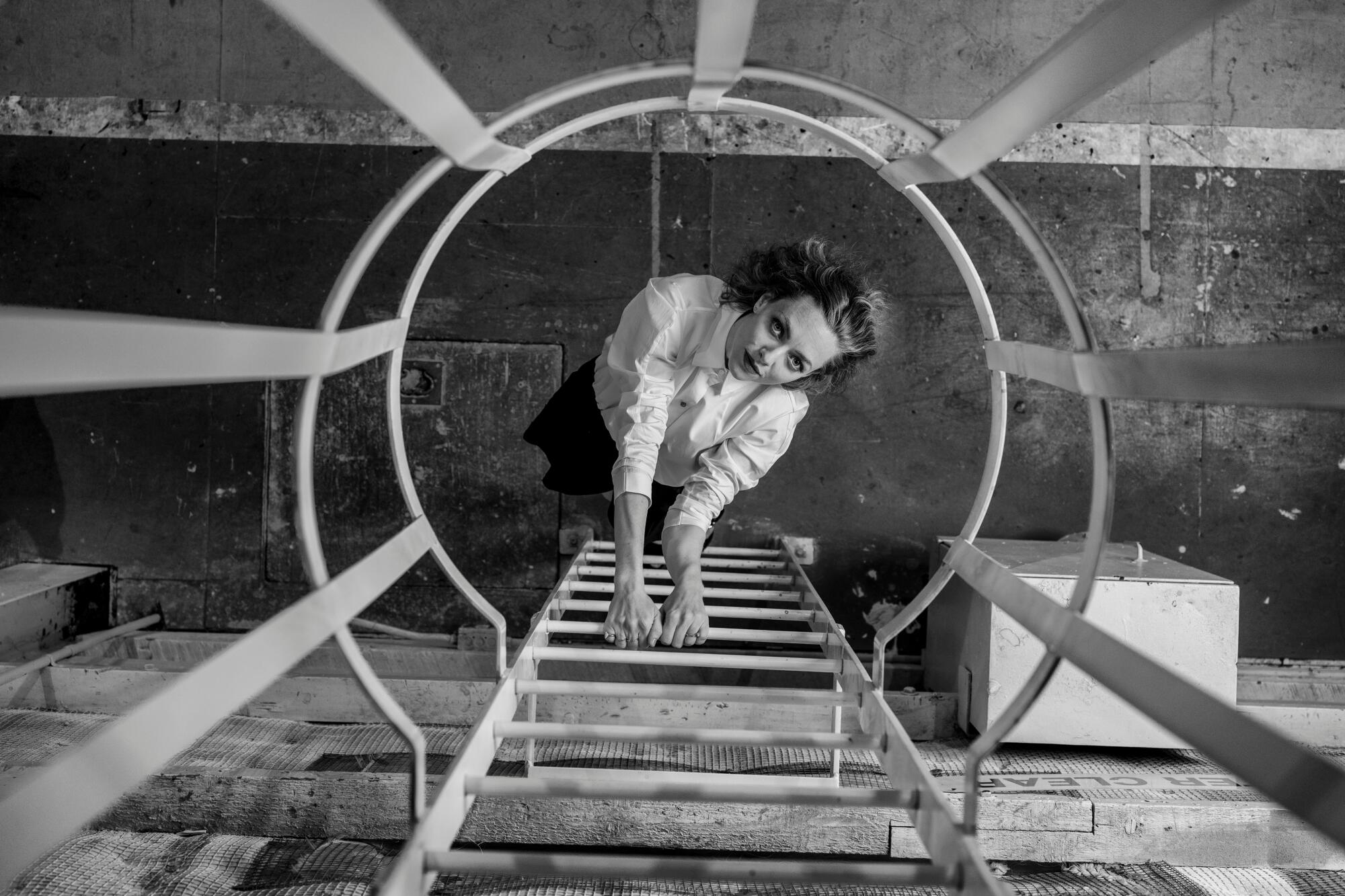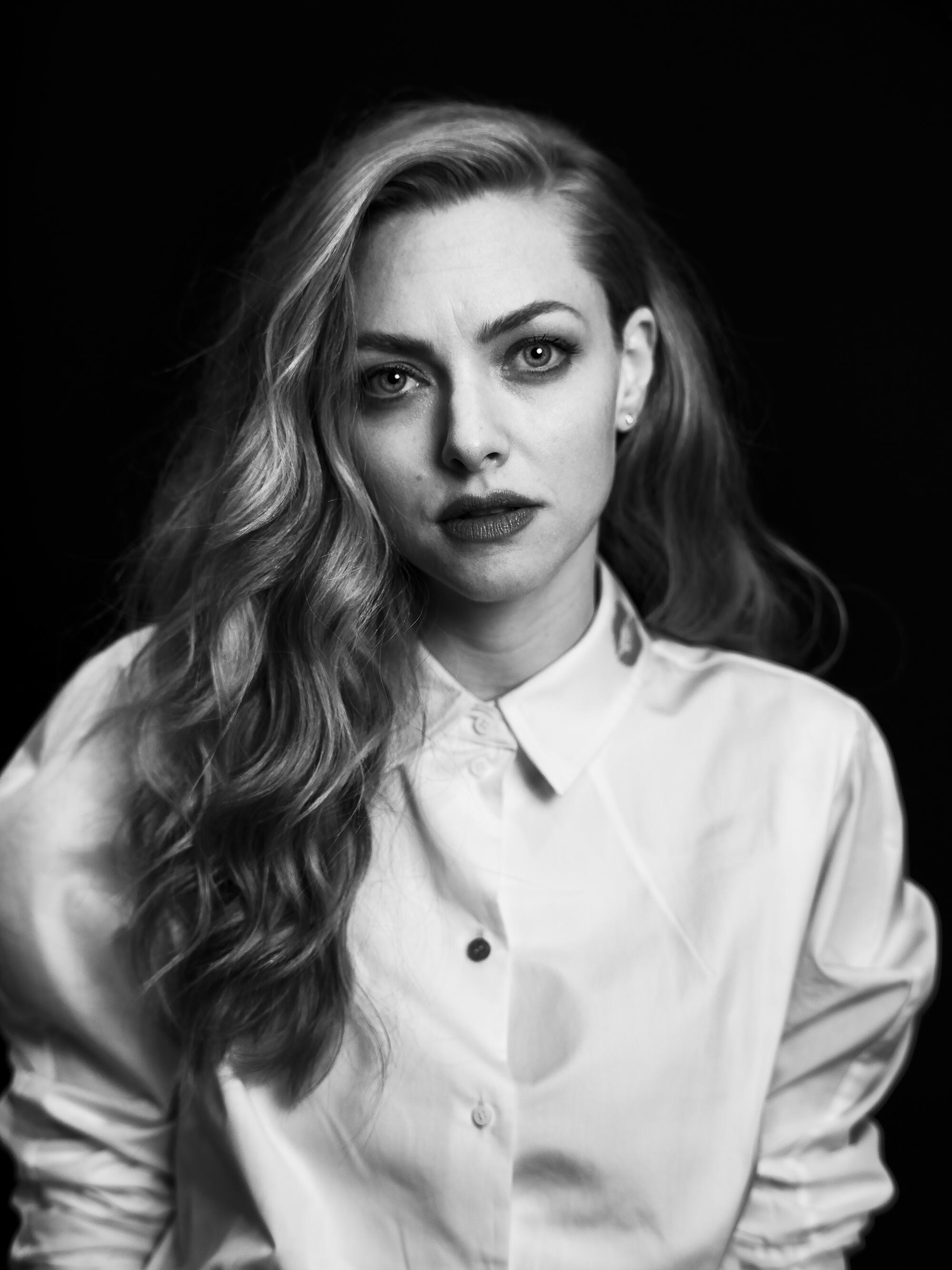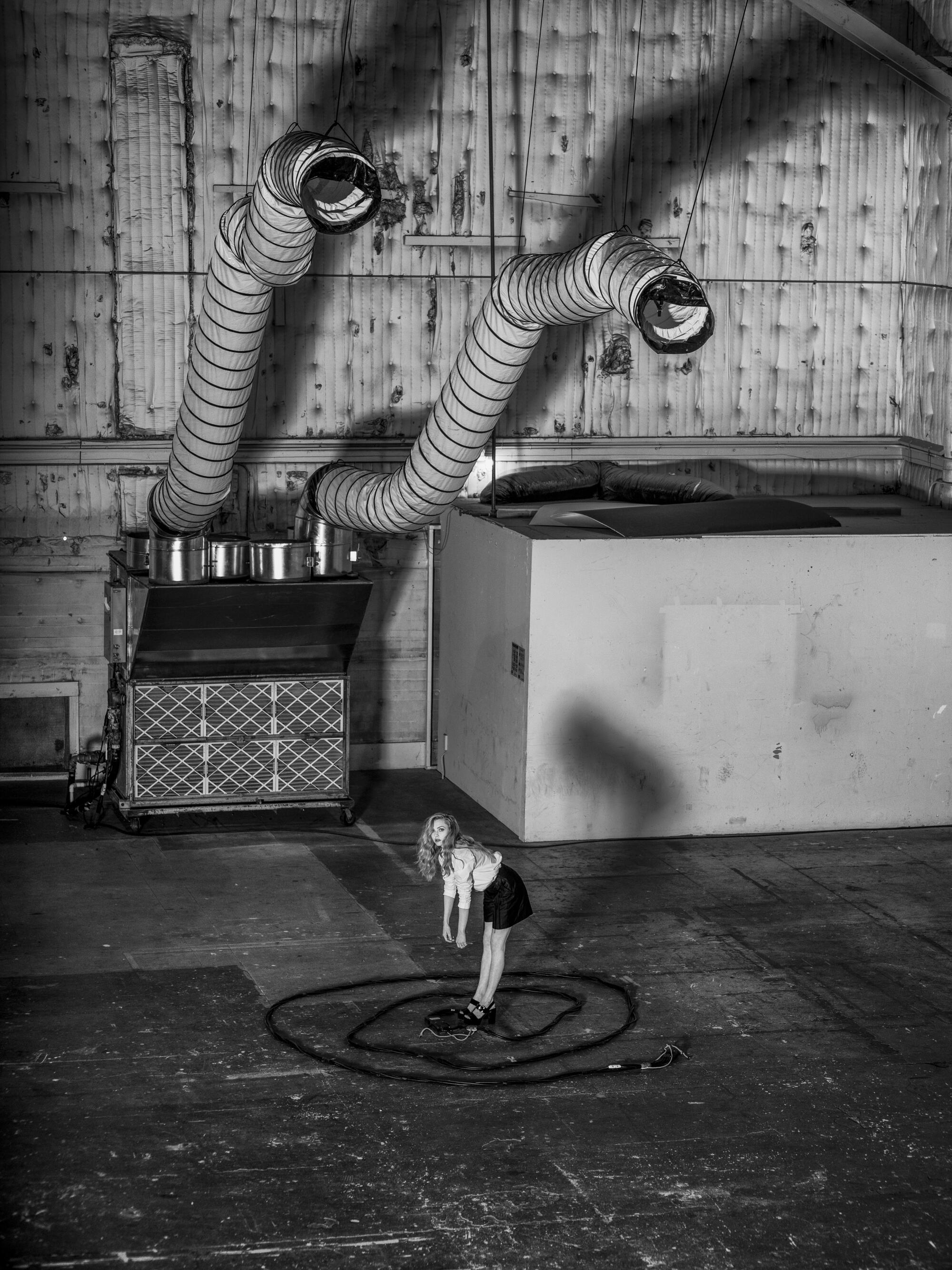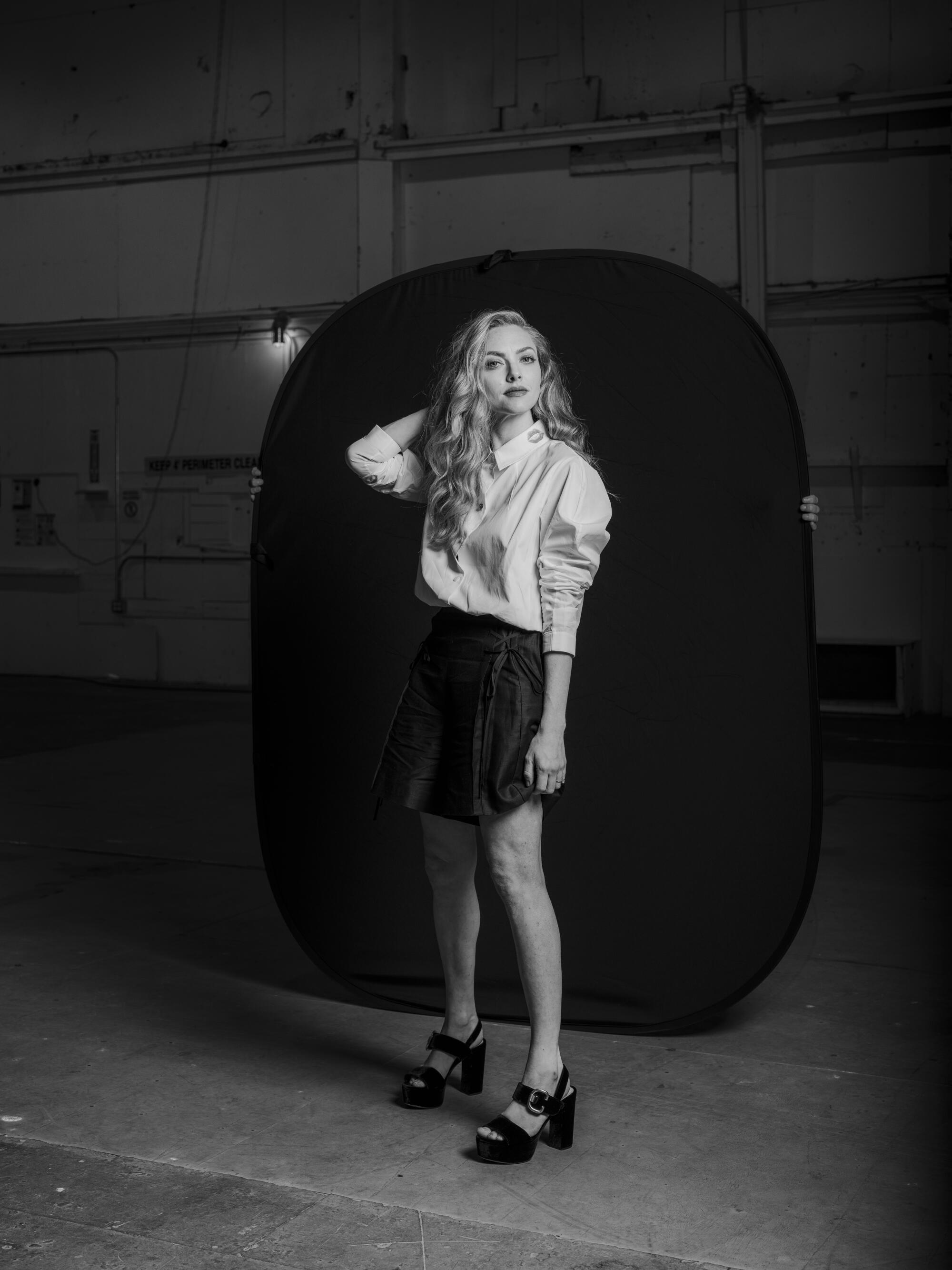
When it comes to landing a great part, 20 noteworthy years under an actor’s belt is helpful. But sometimes, as “The Dropout” star Amanda Seyfried sees it, the right role begets the right role. In this case, playing Marion Davies in David Fincher’s 2020 film “Mank” led her to the role of controversial Theranos founder-CEO Elizabeth Holmes. “I got Oscar-nominated that morning, and I got the [‘Dropout’] call that night,” she says. “Nobody was pretending otherwise.”
Nevertheless, her journey capturing the now-convicted entrepreneur’s look and voice, walking and dancing, drive and fears, relationships and loneliness was the thrill of a lifetime. “I’d never fully embodied somebody that way,” said Seyfried earlier this year before attending a splashy “Dropout” event in Los Angeles. She spoke with The Envelope about the dancing, Holmes’ eyes and that scream.
After the PR rise, the scandalous fall, the book, the podcast, the documentary and the trial, what was your job as the dramatized version of Elizabeth Holmes?
To get the three-dimensional person back, to find the thing that connects us as humans. She’s a villain, but we’re going to characterize her from every perspective. The whole thing about storytelling is we put ourselves in other people’s shoes. And we learn about ourselves. There’s a mirror scene …

The one in the last episode, after her damage control interview, where she appears to be studying herself intently?
That scene was so effective. You’re peeking in on a very intimate moment of desperation, of fierce commitment … how could you not somehow relate to what’s happening within her?
Elizabeth Holmes was playing a part, to some extent. When you studied her, did you recognize a fellow actor?
At the Oscars [last year], I was sitting with David Fincher, and I told him I was going to [play her]. He turned to me, and he said, “This Theranos girl, she’s not listening.” And I was like, “You’re right!” Watch her listen. She’s playing listening. [Seyfried uncannily segues into Holmes, opening her eyes wider, vacantly, and leans in.] Everything is like, “Do you see me listen? Make sure you see that I’m listening to you.” It’s one of the things that helped her succeed. So much of it was an act, and her bubble was bound to burst. It must have been so tiring.
And both of you have such intense eyes.
Hers are even bigger than mine!
Studying hers must have been fascinating.
The deposition tapes, there’s 10 hours of them, and I just watched them over and over and over again because I couldn’t get enough. And I had months to do it, because I [got the role in] March [of 2021] and didn’t shoot until June. I just watched her eyes a lot, at first to see how long until she blinked. It was like deer-in-the-headlights but with a smile.
The dancing has also captured viewers’ attention and even ignited social media.
My favorite thing was getting to express Elizabeth Holmes’ frustration through dance. A character working her s— out. A lot of it was based on the fact that she was a dance student. Naveen [Andrews, as Sunny Balwani] nailed that physicality too.

I heard some of the dances with Naveen were in there because legal concerns prohibited speculated sex scenes.
I didn’t know that! But that’s right, because of litigation, there were many things [showrunner Liz Meriwether] couldn’t write.
The last scene, when she screams alone, is an unnerving break from her plastic poise. What was it like to shoot?
I didn’t know what I was going to do until that day. The weight of the last scene in an eight-hour show. Is it an implosion? An explosion? I know how she feels. She’s looking back at the building she’s running away from, angry, petulant. But this is for the audience. They need some satisfaction. Scream? No scream? I talked to Liz, and she was like, “Try it.” It’s hard to surprise people.
The scream was a surprise.
That’s good. It needed to be so many different things, and unexpected, even for her. And the Uber showing up is a surprise, and the shift that happens so abruptly. Like, who the f— is this person? We’re still left at the end not meant to know who she is, even with her sociopathic shift. We’re not the wiser. It leaves you with a dot dot dot, but not one that’s frustrating.
What did making “The Dropout” teach you about what you do?
I’m a character actor. I’ve been around a while, so it’s not like I ever felt the need to go upwards. As long as I was working, I was fulfilled. I mean, I thought I was fulfilled. But I have never had this much fun in my life. I’ve never done anything more thrilling, on every level, every day, because she was so unlike me. And I am not done. Maybe I’m done with her, but I’m not done playing somebody I can mimic and can get to know, even if it’s somebody I’m making up in my head. My next job, I’m playing someone very similar to myself, which I normally do, but I was like, “What if I had an accent?” They said, “I don’t think so.” But I’m still trying to think of ways I can change [her].
You’re ready to lose yourself more in roles, then?
Wouldn’t that be nice?

More to Read
From the Oscars to the Emmys.
Get the Envelope newsletter for exclusive awards season coverage, behind-the-scenes stories from the Envelope podcast and columnist Glenn Whipp’s must-read analysis.
You may occasionally receive promotional content from the Los Angeles Times.










